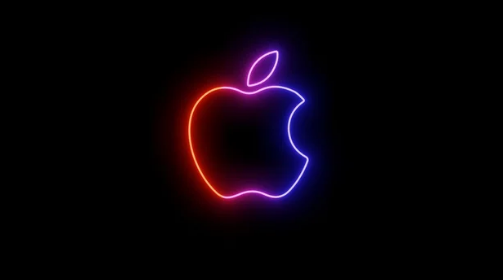Is your iPhone’s Wi-Fi button grayed out or refusing to connect no matter what you try? This is one of the most frustrating issues iPhone users face. In many cases, it’s caused by software glitches—but if your Wi-Fi remains unresponsive after multiple resets or updates, you may be dealing with a hardware malfunction.
In this article, we’ll explain why your iPhone Wi-Fi may be greyed out, how to diagnose the problem, and the best ways to fix it—from simple resets to hardware repairs.
1. Why Your iPhone Wi-Fi is Greyed Out
When the Wi-Fi option in your Settings app appears grayed out (meaning you can’t tap to turn it on), it typically signals that your iPhone’s internal Wi-Fi chip has stopped responding. This can result from:
- Software bugs or corrupted iOS updates
- Overheating that temporarily disables the chip
- Hardware damage due to drops or moisture
- Loose Wi-Fi antenna connections
- Faulty solder joints on the logic board
Understanding the root cause helps you decide whether a DIY fix will work—or if you’ll need professional repair.
2. Step-by-Step Software Fixes
Before assuming your hardware is faulty, try these proven software troubleshooting steps.
Step 1: Restart Your iPhone and Router
Restart both devices to eliminate temporary software or network issues.
Step 2: Reset Network Settings
Go to Settings → General → Transfer or Reset iPhone → Reset → Reset Network Settings.
This clears saved Wi-Fi networks and passwords, forcing a clean connection.
Step 3: Toggle Airplane Mode
Turn Airplane Mode on for 30 seconds, then off again. This resets your iPhone’s wireless radios and can resolve signal conflicts.
Step 4: Update iOS
Outdated software can cause Wi-Fi instability. Navigate to Settings → General → Software Update and install the latest version.
Step 5: Restore iPhone in DFU Mode
If the Wi-Fi remains unresponsive, use iTunes or Finder to perform a DFU (Device Firmware Update) restore. This reinstalls iOS from scratch, clearing deep system issues.
If Wi-Fi still doesn’t work, it’s likely a hardware-related failure.
3. Diagnosing Hardware Problems
Once software issues are ruled out, it’s time to check for physical causes. Signs of hardware failure include:
- Wi-Fi switch is permanently greyed out
- Wi-Fi works briefly, then disconnects randomly
- No networks appear during scanning
- Wi-Fi fails after dropping or overheating the device
- Bluetooth connectivity also stops working (a shared chip often controls both)
These symptoms suggest damage to the Wi-Fi chip, antenna flex cable, or logic board.
4. DIY Fixes for Temporary Relief
If you suspect a mild hardware issue, try these safe home remedies before seeking professional repair.
a. Cool Down Your iPhone
Excess heat can cause the Wi-Fi chip to disable itself. Turn off your iPhone for 10–15 minutes and allow it to cool before retrying Wi-Fi.
b. Clean the Antenna Area
Use a soft brush or compressed air to clean dust or debris from the top and sides of your phone—these are where Wi-Fi antennas are typically housed.
c. Reinsert the SIM Tray
The SIM tray can affect grounding. Remove it, clean gently, and reinsert securely.
d. Use an External Wi-Fi Adapter
If your internal Wi-Fi chip is damaged, a Lightning-compatible Wi-Fi dongle can serve as a temporary fix until the phone is repaired.
5. When to Seek Professional Help
If your Wi-Fi remains grayed out or fails to detect any networks after these steps, the issue is likely internal. Professional repair may involve:
- Wi-Fi Chip Replacement: Replacing the malfunctioning IC responsible for signal control.
- Antenna Flex Cable Replacement: Fixing or reconnecting a broken antenna link.
- Motherboard Repair: Repairing or resoldering damaged circuits on the logic board.
Always choose an Apple Authorized Service Provider or a reputable technician experienced in board-level iPhone repairs to ensure safe handling.
6. Typical Repair Costs
| Repair Type | Estimated Cost (USD) | Repair Time |
|---|---|---|
| Antenna Replacement | $50–$100 | 30–60 minutes |
| Wi-Fi Chip Replacement | $120–$200 | 2–3 hours |
| Motherboard Repair | $180–$300 | 1–2 days |
Costs vary by model and region but provide a general idea of what to expect.
7. Preventing Future Wi-Fi Failures
After fixing your iPhone, protect it from future hardware problems with these tips:
- Avoid overheating: Don’t use your phone heavily while charging or in direct sunlight.
- Keep it dry: Even a few drops of moisture can cause corrosion over time.
- Handle with care: Drops can loosen internal components.
- Use certified repairs: Low-quality replacements or unauthorized technicians can cause recurring Wi-Fi issues.
- Update regularly: Apple frequently releases iOS patches that improve wireless stability.
8. When Replacement Makes More Sense
If your iPhone is several years old or requires motherboard repair costing more than half its value, replacing the device might be the more cost-effective solution. Newer models feature stronger antennas, faster chips, and better heat management.
9. Final Thoughts
A grayed-out or non-connecting Wi-Fi button is more than a minor inconvenience—it’s often a warning that your iPhone’s hardware needs attention. Start with simple software fixes, but if the problem persists, seek professional diagnosis and repair.
Restoring your iPhone’s Wi-Fi connectivity doesn’t just get you back online—it extends your device’s lifespan and ensures smoother performance for years to come.
Also Read :
